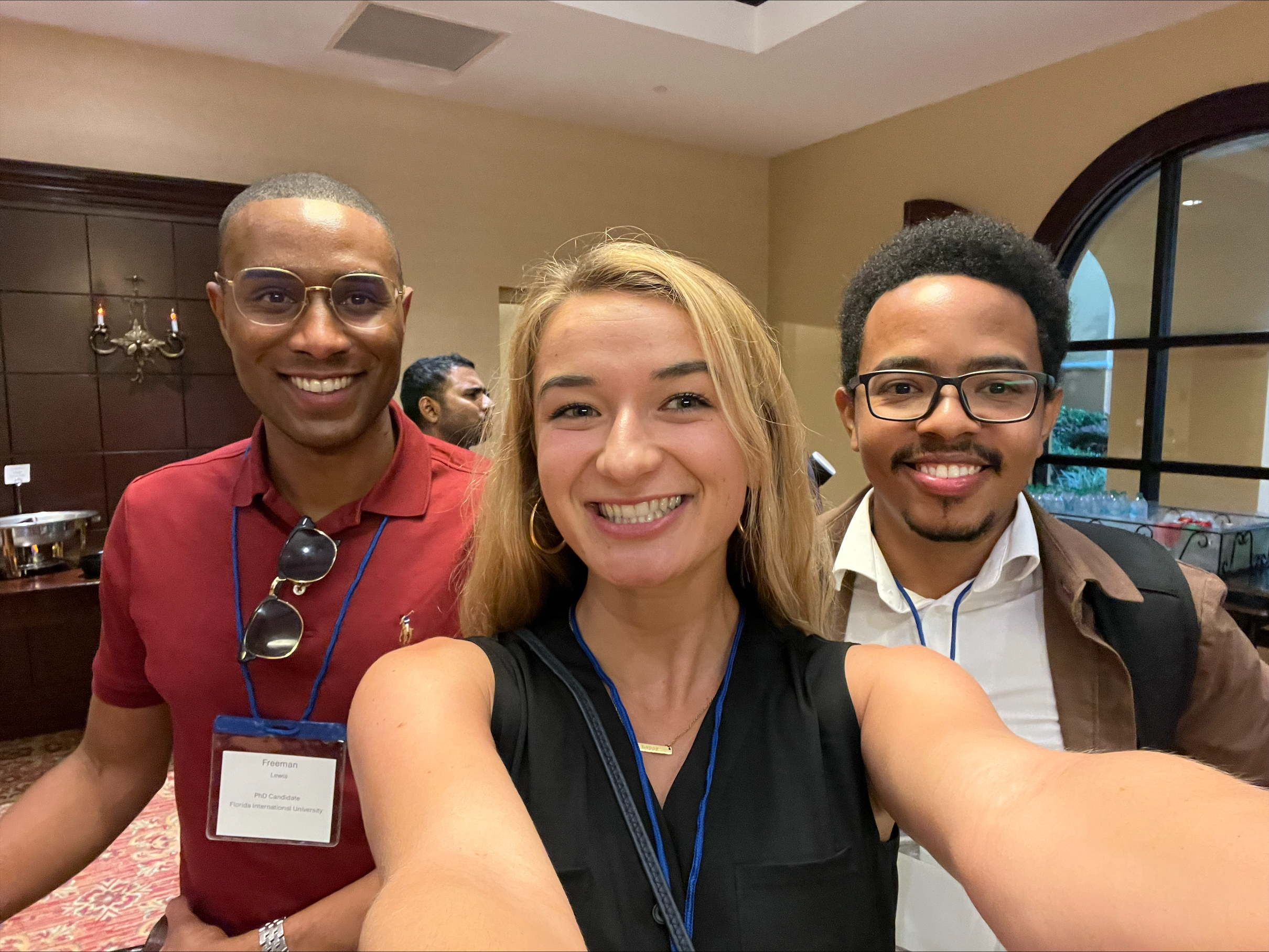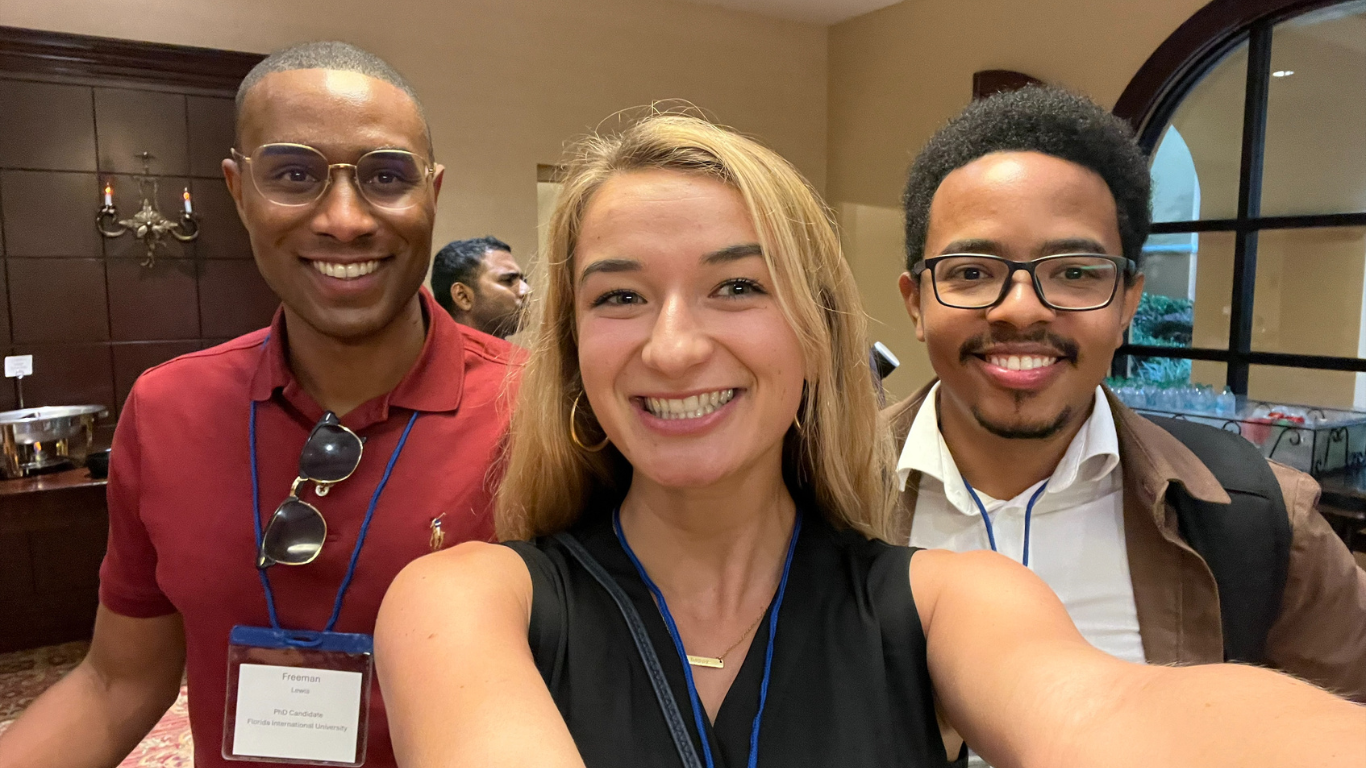FIU public health Ph.D. candidates present research at Science, Engineering and Medicine conference

Recently, three students from the FIU Robert Stempel College of Public Health & Social Work presented their abstracts at the Academy of Science, Engineering and Medicine of Florida’s Annual Meeting (ASEMFL) in Orlando, Florida.
Daniel Martinez Perez, Sarah Hardin and Freeman Lewis were selected after a competitive process to present research covering neurological diseases like Alzheimer’s disease and parkinsonism. The three students are all part of the Brain, Behavior, and the Environment program at FIU Stempel College.
“These are students that are putting immense time and effort into exploring the causes of neurological diseases that impact millions of people across the globe,” said Tomás R. Guilarte, dean of Stempel College who also serves as the major professor for two of the students. “I am proud of them for their work and for being selected to present their research findings to the ASEMFL community.”
Learn more about their work below.
Daniel Martinez Perez
Major professor: Dr. Tomás R. Guilarte
Daniel Martinez Perez is studying the role the translocator protein (18 kDa), also known as TSPO, plays as a biomarker of neuroinflammation in the context of Alzheimer’s disease (AD) progression.
“We are looking to establish at what age and stage of the disease TSPO begins to increase. For that we used a life course approach in an animal model of AD and studied brain samples donated by Colombian patients with AD. These patients, who carry a mutation known as the “paisa mutation”, are part of the world’s largest familial Alzheimer’s group. They begin showing symptoms in their 40s and typically pass away in their 50s.
We found that in the brain, TSPO increases before cognitive decline. We also discovered that the protein was found in high amounts in microglia – the brain’s immune cells. Interestingly, the highest levels of TSPO were observed in microglia that were in contact with amyloid-beta plaques (the clumps of proteins that build up in the brains of people with AD). Microglia not touching these plaques had lower levels of TSPO. This suggests an important role of TSPO in AD progression.”
Sarah Hardin
Major professor: Dr. Tomás R. Guilarte
Sarah Hardin is studying how lead toxicity impacts the heart and the brain.
“Lead toxicity is a global public health issue and it's estimated that nearly 1/3 of children are exposed to lead, which notably has no safe exposure level. Early exposure to lead in infancy and childhood is known to cause neurotoxic effects, impacting cognition, memory, learning, behavior, and decreasing IQ. Additionally, the American Heart Association has reported that lead exposure is a risk factor for heart disease and heart disease is a risk factor for Alzheimer's Disease (AD). With this knowledge, we wanted to test a life course approach on the effects of chronic early life lead exposure and later life AD development in an animal model of AD while studying potential cardiovascular implications in-between. Our findings show how exposure to lead caused numerous cardiovascular conditions and led to a significant increase in amyloid-beta plaques, suggesting an early effect of lead on AD pathogenesis.”
Freeman Lewis
Major professor: Dr. Roberto Lucchini
“My project explores the neurotoxic effects of chronic manganese exposure on aging populations in Brescia, Italy, where industrial emissions have historically contributed to elevated exposure levels. Using metabolomic and lipidomic analyses, we aim to identify biomarkers linked to both manganese exposure and parkinsonism. This research comes at a critical time, as demand for manganese rises due to its use in electric vehicle (EV) batteries, potentially increasing exposure in industrial regions globally. Our findings could guide public health efforts to monitor and manage these risks, supporting early diagnosis, preventive screening, and regulatory standards to protect vulnerable populations from manganese-related neurotoxicity. This work ultimately seeks to contribute to safer environmental practices as we move toward renewable energy solutions.”

